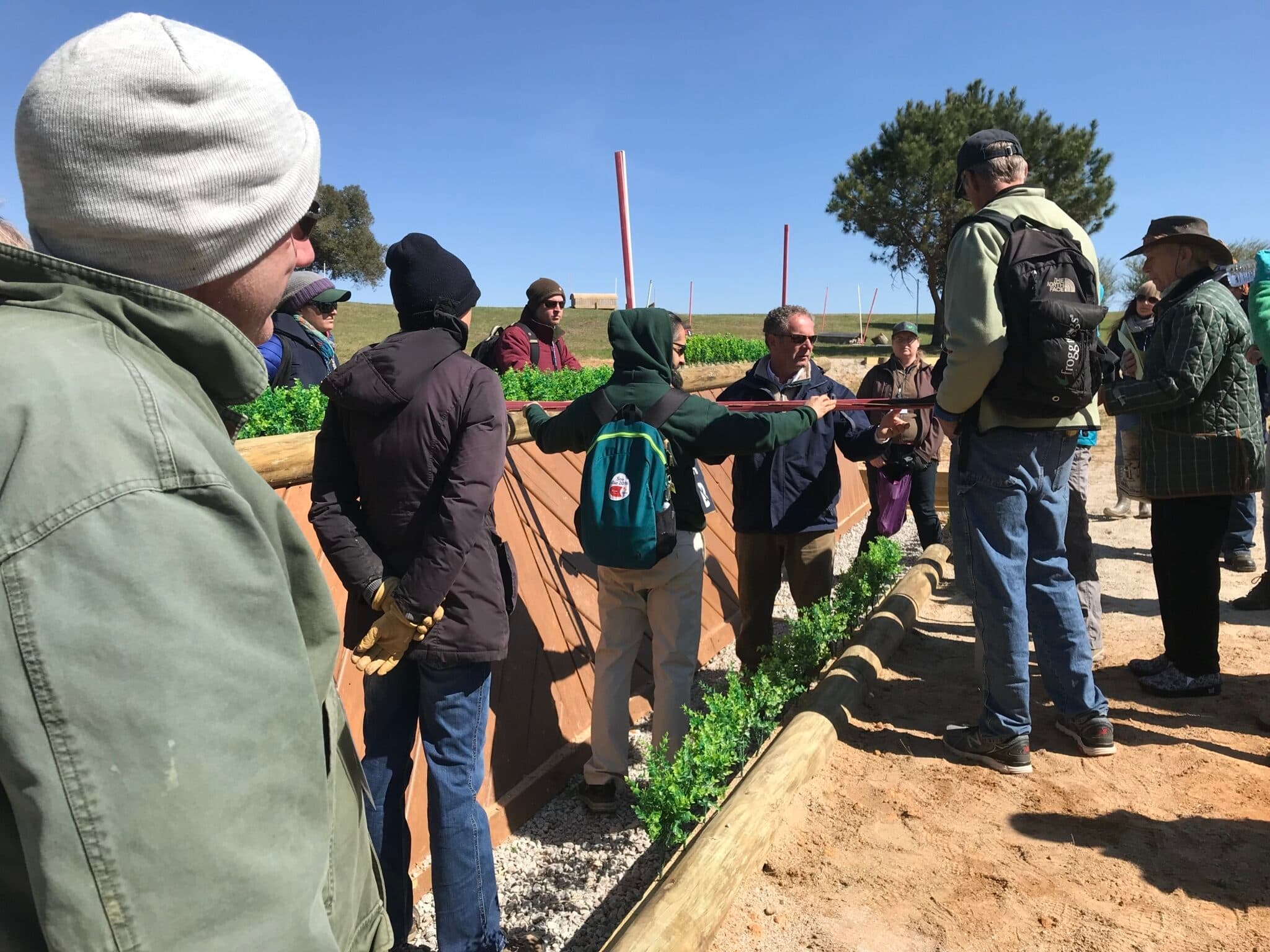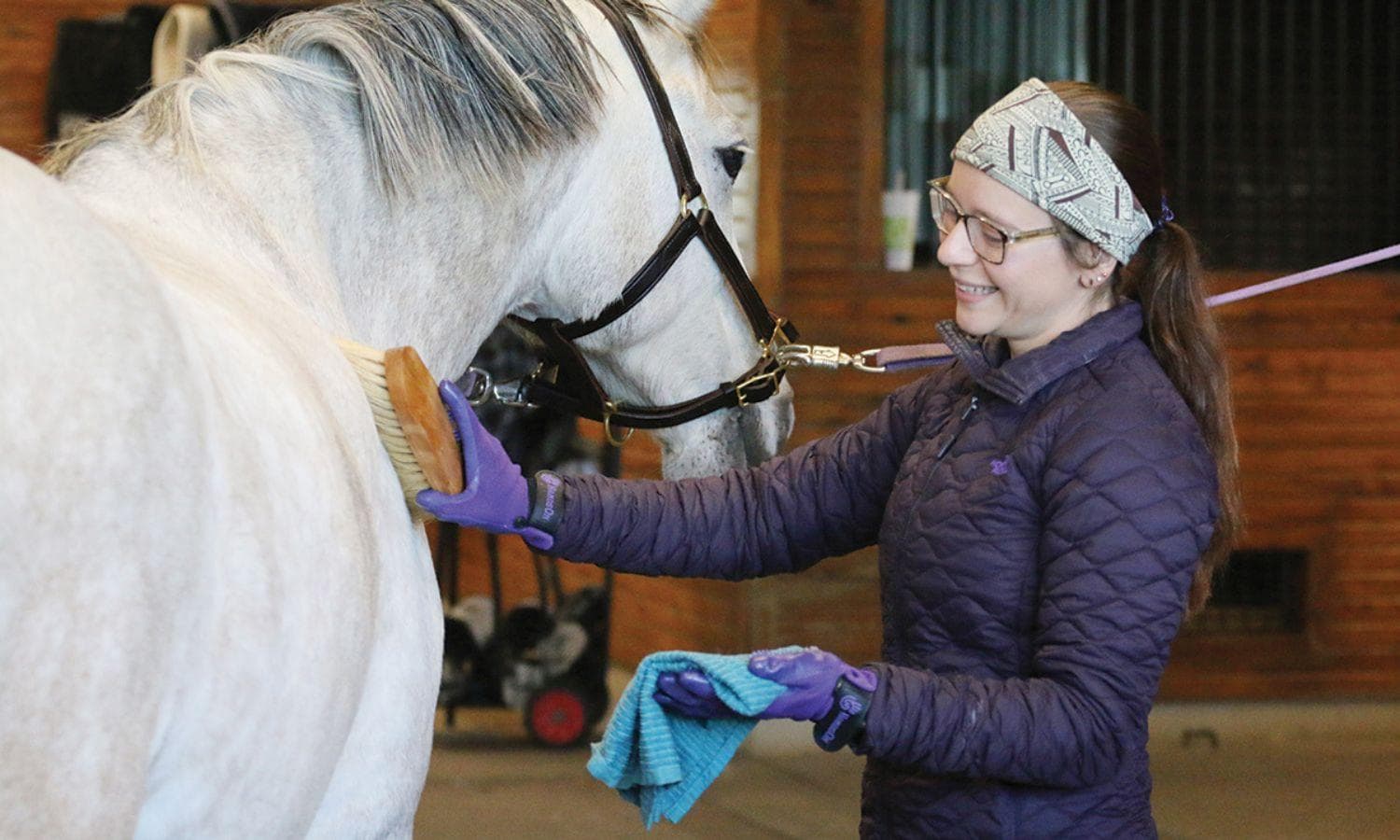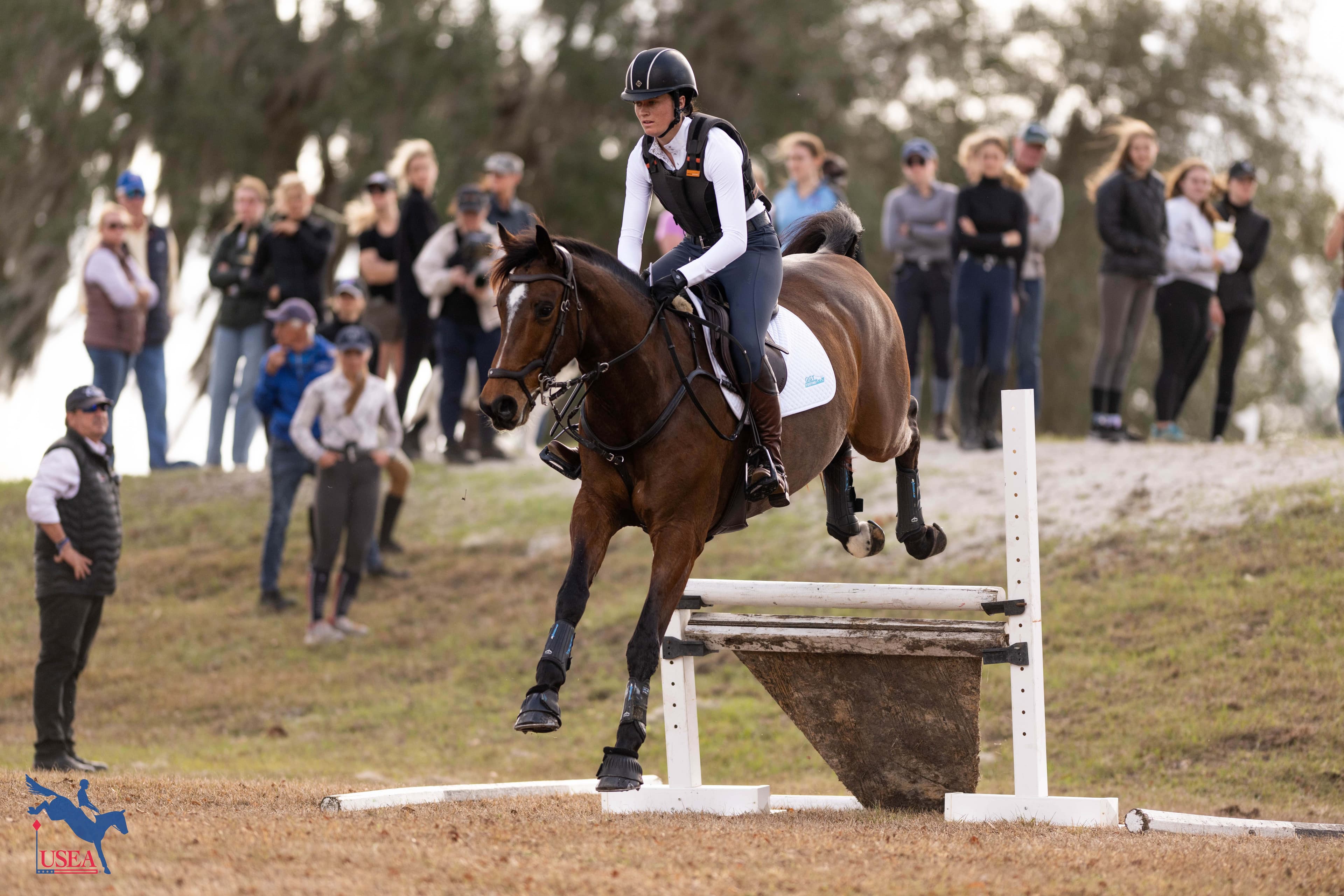So You Want to Be a Judge, Part II: Amp Up Your Course Walk

Many of us, when we walk courses, have a routine. Things we look for, things we know will catch certain riders off guard, things we’re careful to point out to our students. Even the way we walk, the practiced length of our strides, the lines we take between fences. We think about this stuff from the rider or trainer’s perspective, carefully honed over years of walking, thinking about, and riding courses. Time, and experience.
In my years of course experience, the course designer’s perspective is something I thought I understood. Because I’d carefully considered the course and then (some of the time, at least) survived it, I’d essentially taken the course designer’s class, and passed.
But as I mentioned in my first blog, one of the reasons I’m pursuing my “r” license is to further my education. And one of the biggest realizations I came to at our recent Jumping Training Session in Aiken, S.C. in March was that my time-honed routine was missing a crucial element: while I thought I’d grasped the concept of course design, in reality I hadn’t the slightest.

For three days, our cohort was immersed in the nitty-gritty of design, construction, safety, and analysis, walking and considering cross-country and show jumping courses at the beautiful Full Gallop, Sporting Days, and Stable View facilities with Gretchen Butts, Tremaine Cooper, and Sally Ike as our guides. And in the company of luminaries like these, you realize too quickly the details you’ve been naively hazy on. Which types of stakes are available to hold fences in place, and how should they be safely implemented? Considering the footing and slope of a certain area, where do you optimally place a table, in terms of both rideability and competitive value? What types of frangible technology should you use, and where? How can decoration change the way a horse reads a fence? How many turns left, how many right, how much distance, etc, etc.
The more we learned, the more I realized the infinite number of decisions made before any competitor even starts out on a course walk. It starts to sound like an awful lot of responsibility, and it is. As riders and trainers, it’s not so much that we take these decisions for granted, but that it’s hard to envision the scope of this type of work without actually engaging in it. As “r” eventing judges, in addition to judging dressage, we’ll also be able to judge show jumping and serve as President of an event’s Ground Jury, essentially overseeing all of the course inspections and decisions of a given competition. The license starts to look pretty daunting.

At the end of three days of this type of engagement and analysis, you either throw your hands up and run away screaming, or you get determined and dig in for the duration. I knew I had a couple of students competing at the upcoming Morven and Loudoun Horse Trials in Leesburg, Va., where Tremaine Cooper was the designer, and I was determined to put what I’d learned to the test.
And the funny thing is, my routine still worked. From a rider’s perspective, I still had those years of experience on my side, still knew how to comfort my student’s qualms about a downhill approach or bending line.
But there was also this new sense of wonder, this new appreciation for the details, and the sense that I’d been missing out on this perspective for too long. See how the slight curve in the approach to this fence sets you up just so? Or how the brush on the back corner of the edge of this wide table helps define it? I’m certainly no expert yet, but I’ve got plenty of courses to walk this year, and a determined enthusiasm to explore this new idea.
My take-away advice is this: the next time you walk a course, slow down. Take a breath, look at everything. Take into account all the tiny little details of every fence you jump. There’s intention in everything, and more analysis than you can imagine. Eventing is a passion, no matter which angle you take.
Abby Gibbon is the owner, trainer, and manager of Fine Idea Farm in Mt. Airy, Md. She is currently pursuing her “r” Eventing Judge license and looks forward to writing about the process throughout the year. Stay tuned for more!














